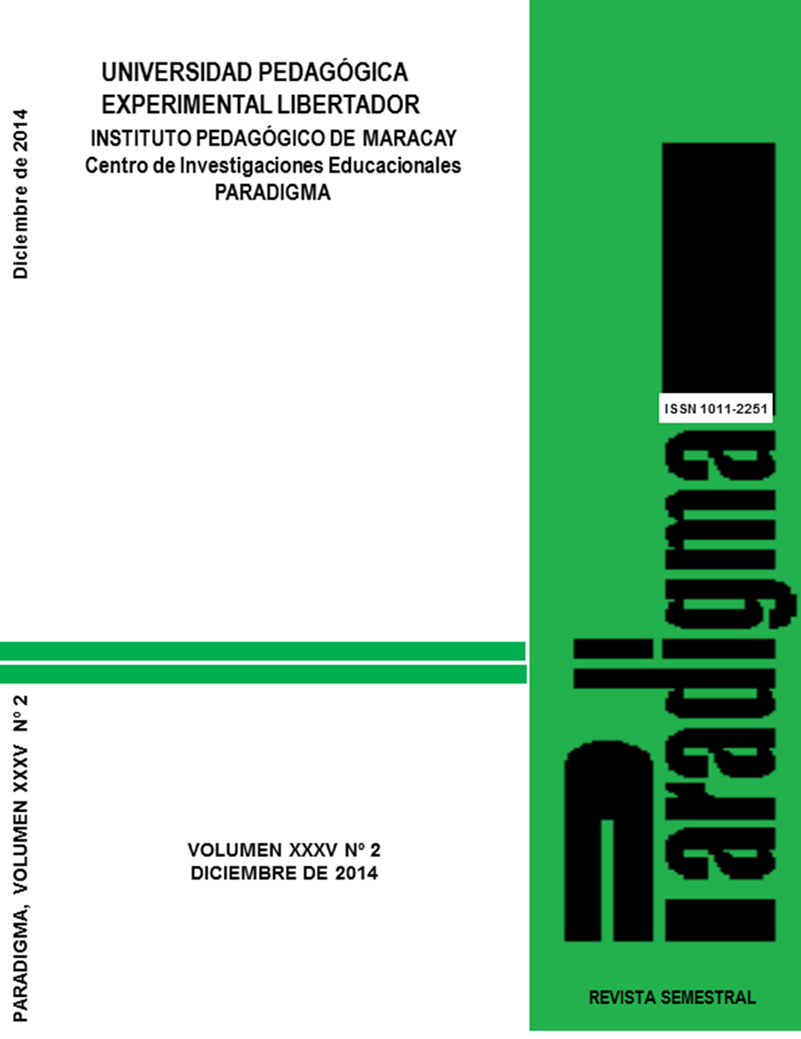Estructura sintáctico-pragmática del tema en el habla del español de Venezuela
Resumen
El objetivo de este trabajo es analizar el tema del enunciado en el habla del español de Venezuela, para explicar cómo se integra o se relaciona el tema con las funciones sintácticas y pragmáticas. Teóricamente, este estudio se fundamenta en la sintaxis funcional y en la sintaxis de la lengua oral, y con respecto a la metodología, me asiste el enfoque discursivo funcional (Halliday 1967, Chafe 1979). El corpus de estudio estuvo constituido por el Corpus del Laboratorio de Fonética de la Universidad de Los Andes. De este se seleccionaron tres informantes. La muestra estuvo conformada por 261 enunciados con temas de conversación codificados en el sintagma nominal. Como resultados se tiene que el SN léxico (65,1%) es la realización más usada para codificar el tema de los enunciados, pues los SN pronominales alcanzaron un porcentaje de 34,9%. El tema como estructura temática se expresa a través de funciones sintácticas tales como: sujeto (68,2%), objeto directo (17,3%), objeto indirecto (8,1%) y predicativo (6,4%). Pragmáticamente, se observó que el 69,4 % de los temas se presentan como información dada, en tanto que apenas 30,6% presenta información nueva. En conclusión, desde la perspectiva de la sintaxis funcional, las nociones de tema, información dada y nueva pertenecen a planos distintos, tema obedecen a una estructura temática, mientras que dado y nuevo dependen del texto, el contexto lingüístico y la situación de habla durante el acto comunicativo.Palabras clave: tema, oralidad, estructura sintáctico-pragmática, español de VenezuelaSyntactic-pragmatic structure of the theme in Spanish speech in VenezuelaAbstractThe aim of this paper is to analyze the issue of statements in the speech of Spanish in Venezuela, to explain how it fits or is related to the topic with the syntactic and pragmatic functions. Theoretically, this study is based on the functional syntax and syntax of spoken language, and with respect to methodology, I attended the functional discourse approach (Halliday 1967, Chafe 1979). The corpus consisted of the Corpus Phonetics Laboratory of the University of Los Andes. This three informants were selected. The sample consisted of 261 statements with talking points encoded in the noun phrase. As a result we find that the lexical NP (65.1%) is the embodiment used to encode the subject of statements. The pronominal SN reached a percentage of 34.9%. The issue as thematic structure is expressed through syntactic functions such as subject (68.2%), direct object (17.3%), indirect object (8.1%) and predicative (6.4%). Pragmatically, we found that 69.4% of the subjects are presented as given information, while only 30.6% presented with new information. In conclusion, from the perspective of functional syntax, the notions of theme and rheme, given and new information belonging to different planes, theme and rheme obey a thematic structure, while given and again depend on the text, the linguistic and speech situation in the communicative act.Keywords: theme, orality, syntactic-pragmatic structure, Spanish in VenezuelaDescargas
La descarga de datos todavía no está disponible.
Métricas
- Visualizaciones del Artículo 96
- PDF downloads: 39
Cómo citar
Durán (IPB), M. (1). Estructura sintáctico-pragmática del tema en el habla del español de Venezuela. PARADIGMA, 35(2), 107-127. https://doi.org/10.37618/PARADIGMA.1011-2251.2014.p107-127.id540
Sección
Artículos























































